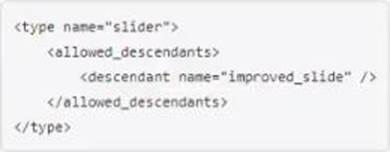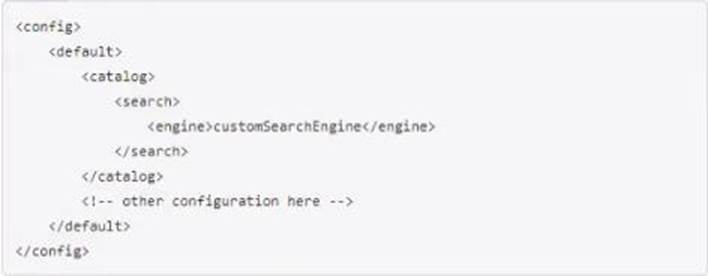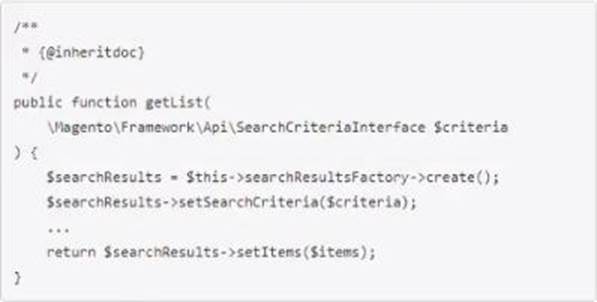Adobe AD0-E709 Adobe Commerce Developer Expert Online Training
Adobe AD0-E709 Online Training
The questions for AD0-E709 were last updated at Dec 14,2025.
- Exam Code: AD0-E709
- Exam Name: Adobe Commerce Developer Expert
- Certification Provider: Adobe
- Latest update: Dec 14,2025
When paying by Bank Transfer, there is a requirement to send an email to customer service with payment details, after the order is placed successfully.
Which two events can be used to send an email during the order placement process? (Choose two.)
- A . sales_order_payment_pay
- B . sales_model_service_auote_submit_before
- C . sales_model_service_quote_submit_success
- D . sales_order_place_after
Which two techniques can be used to protecta storefront POST action against Cross Site Request Forgery (CSRF) attacks? (Choose two.)
- A . The form sending data to that action needs to include a fornjtey parameter with a valid form key and the action must instantiateManentoFramworkDataForumKeyFormkeyValidator validate it.
- B . The action needs to implement MgentoFrameworkAppCSrfAwareActioninterface and include the validateForCsrf method implementing the actual protection logic.
- C . The form sending data to that action needs to include a form_key parameter with a valid form key which will automatically be used in a built-in CSRF validation.
- D . The action needs to implement
MagentoFrameworkAppActionvHttpPosTActioninterface to trigger built-in CSRF
validation.
An Adobe Commerce developer has been asked to modify the PageBuilder slider content type to allow a new custom content type (other than slide) to be assigned as a child. The developer has already created the new content type called improved.slider_slide their module. They now need to create a new view/adminhtml/pagebuilder/content_type/slider.xml file in their module to allow the new content type to be a child of slider content types.
What is the correct xml to accomplish this?
A)

B)

C)

- A . Option A
- B . Option B
- C . Option C
When creating a new payment method, the Adobe Commerce developer adds the dependency injection configuration for payment method facade in the modules etcdi.xml.
What is required for the custom payment methods Value Handlers pool?
- A . A default handler must be defined.
- B . A country handler must be defined
- C . An offline payment handler must be defined.
An Adobe Commerce Developer has created a new custom block extending MagentoFrameworkviewElementAbstractBlock and has set the cache_lifetime data property for the block so that the output gets cached.
The block is inserted into the sidebar, and displays differing content depending on which currency is being used. The developer finds that the block is displaying the same content for all currencies, depending on which currency is viewed first after the cache has been flushed.
How would the developer resolve this?
- A . Implement the MagentoFrameworkDataObjectldentityinterface class, as well as a getldentities() method, returning the current currency code.
- B . Override the getCacheKeyinfo() function adding the current currency code to the returned array.
- C . In the constructor, add the current currency code as a cache tag using $thismetaDataCcache_tags’’, CURRENCY_CODE ]) .
An Adobe Commerce developer has a requirement to add some settings which are unique to a specific system and it will be dumped to app/etc/env.php when theCLI command php bin/magento app:config:dump is used.
How would the developer achieve this?
A)

B)

C)

- A . Option A
- B . Option B
- C . Option C
An Adobe Commerce developer has created a before plugin for the save () function within the magentoFrameworkAppCacheProxy class. The purpose of this plugin is to add a prefix on all cache identifiers that fulfill certain criteria.
Why is the plugin not executing as expected?
- A . Another around ptugm defined for the same function does not call the callable.
- B . Cache identifiers are immutable and cannot be changed.
- C . The target class implements MagentoframeworKObjectManagerNointerceptablelnterface .
An Adobe Commerce developer wants to cover their custom modules with Integration Tests. However, the project they are working on includes a 3rd party module that introduces a new search engine which needs to be used in Integration Tests as well. To do so. catalog/search/engine in the core.config_data table needs to be set to the customSearchEngine on the default scope.
Theyalready created a phpunit.xml file in [m2 base dir/dev/tests/integration by copying unmodified content of phpunit.xml.dist from the same directory and will be using it for their tests.
How do they make sure that this setting is used for all the Integration Tests in their project using best practices?
- A . Modify the phpunit.xml file they will be using and add the following node inside the phpunit node:

- B . Modify or create a magento base dir] dev/test/integration/etcconfig-global.php file and ensure that it contains the following content:

- C . Include the following annotationin class-level docboack for event integration test class in the project:

An Adobe Commerce developer has been tasked to create a new rest API endpoint to get a list of items for a CustomEntity. When testing the endpoint, it throws an exception.
This is the code the developer has written forMyVendorModuleApiCustomEntityRepositoryInterface:

And this is the implement method within MyVendorMyModulemodelCustomEntityRepository:

What is wrong with the code?
- A . The @return annotation is missing in the MyVendorMyModuleApiCustomEntityRepositoryInterface::getList function.
- B . The implemented getlist function is returning an array, it should return an instance of MyVendorMyModuleApiDataCustomerEntitySearcResultslnterface .
- C . MagentoFrameworkApiSerchCriteriaInterface $searchCriteria is not a valid parameter for the getList function.
An Adobe Commerce developer has been tasked to create a new rest API endpoint to get a list of items for a CustomEntity. When testing the endpoint, it throws an exception.
This is the code the developer has written forMyVendorModuleApiCustomEntityRepositoryInterface:

And this is the implement method within MyVendorMyModulemodelCustomEntityRepository:

What is wrong with the code?
- A . The @return annotation is missing in the MyVendorMyModuleApiCustomEntityRepositoryInterface::getList function.
- B . The implemented getlist function is returning an array, it should return an instance of MyVendorMyModuleApiDataCustomerEntitySearcResultslnterface .
- C . MagentoFrameworkApiSerchCriteriaInterface $searchCriteria is not a valid parameter for the getList function.
Latest AD0-E709 Dumps Valid Version with 135 Q&As
Latest And Valid Q&A | Instant Download | Once Fail, Full Refund

